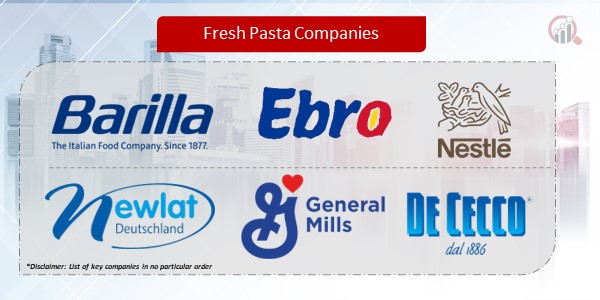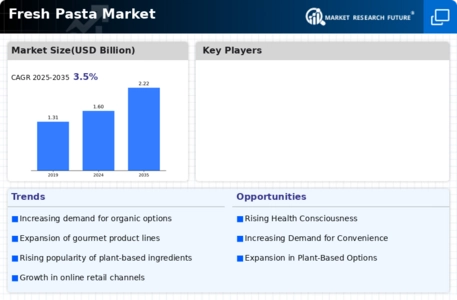Top Industry Leaders in the Fresh Pasta Market

Strategies Adopted by Fresh Pasta Key Players
The Fresh Pasta Market is a competitive sector with several key players shaping its landscape. Companies have established themselves as leaders in the fresh pasta segment by offering a wide range of products, including filled and unfilled pasta varieties, catering to the diverse tastes of consumers.
Key Players:
Barilla Group - Italy
Ebro Foods - Spain
Nestlé SA - Switzerland
General Mills - United States
Newlat Food - Italy
De Cecco - Italy
Vicenzi Group - Italy
Fresh Cuisine - United States
Marcello Raffetto - United States
Buitoni Italy (Nestlé subsidiary)
Roncadin – Italy
Lustucru Frais - France (Ebro Foods subsidiary)
The Gragnano Pasta Factory - Italy
Cirio Delverde food industries - Italy
Pasta Evangelists - United Kingdom
Lancia Pasta - United States
Paesana - United States
Pasta Lensi - Italy
Davinci - United States
Manicaretti Italian Food Importers United States
Fratelli Carli - Italy
Seggiano - Italy
To maintain their competitive edge, these key players have adopted various strategies. Barilla Group, for instance, has focused on expanding its product portfolio to include gluten-free and organic pasta options, catering to the growing demand for healthier alternatives. De Cecco has emphasized its commitment to traditional Italian pasta-making techniques, highlighting its heritage and quality. Giovanni Rana has invested in innovative packaging and marketing campaigns to increase brand visibility and appeal to a younger demographic.
Market Share Analysis:
The Fresh Pasta Market is influenced by factors such as brand recognition, product quality, pricing strategy, distribution network, and customer loyalty programs. Companies that can offer high-quality fresh pasta products at competitive prices and effectively market their brand are likely to gain a larger market share.
News & Emerging Companies:
The Fresh Pasta Market. Emerging companies such as Pasta Evangelists and Sapori Antichi have entered the market with a focus on premium, artisanal pasta products. These companies have differentiated themselves by offering unique flavors and high-quality ingredients, appealing to discerning consumers.
Industry Trends:
The fresh pasta market. Companies are increasingly investing in new product development, expanding their distribution channels, and enhancing their online presence to capitalize on the growing demand for fresh pasta. There is also a trend towards sustainability, with companies focusing on environmentally friendly packaging and sourcing practices.
Competitive Scenario:
The Fresh Pasta Market is dynamic and competitive, with companies continuously innovating to stay ahead of the competition. With the increasing popularity of Italian cuisine worldwide, the market is expected to continue its growth trajectory in the coming years.


